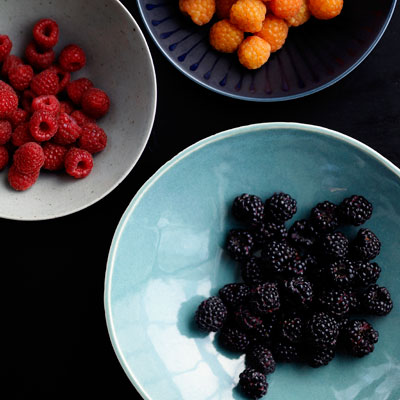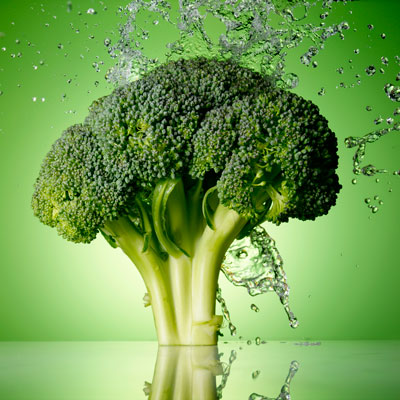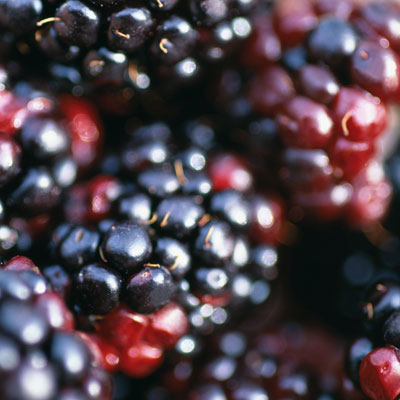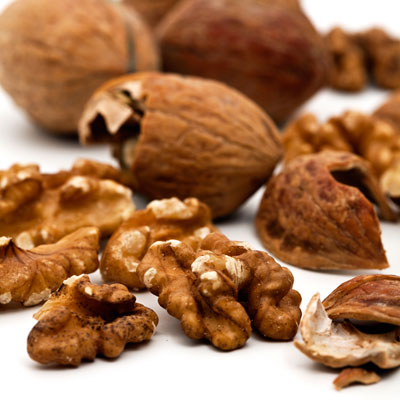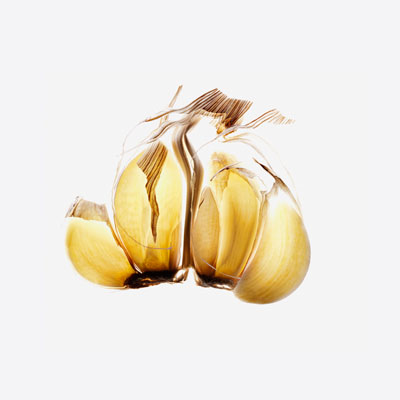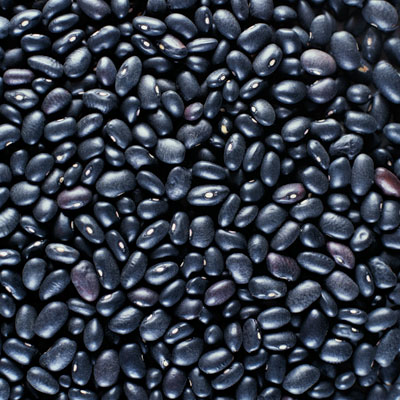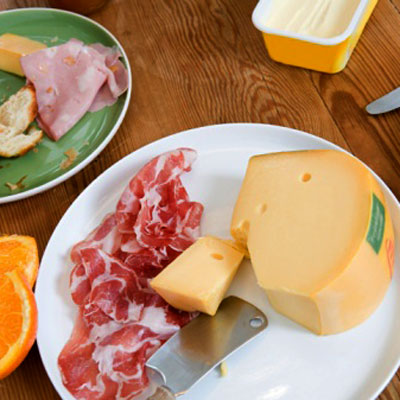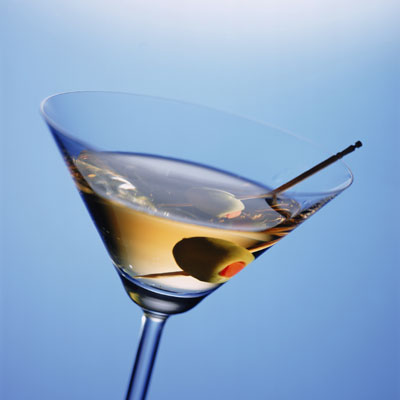Businesses looking to make an environmentally friendly New Year’s
resolution for 2012 could save money, time and energy with the new eco boiler range from Angel Springs.
Angel Springs, the UK’s leading service provider of both bottled and
mains-fed water coolers, is offering a no-obligation, seven-day free
trial on its eco boiler range for businesses wanting to save on time and
electricity bills when staff make hot drinks.
Rather than the standard office kettle – which takes minutes to boil,
creates queues, and can end up being overfilled and wasting energy –
eco boilers only use the exact amount of water needed to make hot drinks
in the office. They provide hot water on demand – and can instantly
heat up to 156 cups per hour.
Angel Springs’ innovative eco boilers take cold water directly from
the mains, pass it through BRITA Filtration technology then boil it to
around 100°C using fast, efficient heating elements.
Eco boilers instantly heat the amount of water necessary to fill a
cup – whether staff are filling up a single mug or fetching a round of
hot drinks – so no electricity is wasted by boiling more water than is
needed. Eco boilers also use far less power than traditional appliances.
“Eco boilers are a great addition for any office kitchen or catering
environment,” explains John Murphy, commercial director of Angel
Springs. “The boilers only use the amount of water needed, so businesses
save on electricity bills, and it’s environmentally friendly, because
there’s no waste.
“Staff can make a hot drink immediately and return to their desks, so businesses also save a lot of time.
“By taking a no-obligation, seven-day free trial, businesses can
discover for themselves just how good our eco boilers are – both in
terms of efficiency and cost-savings, and in terms of making a
great-tasting drink!”
Customers who sign up for a seven-day free trial in December, and
decide they wish to take an Angel Springs eco boiler, can get one
installed for January.
It’s a great way to be more environmentally friendly, save time and costs, and start 2012’s New Year resolutions in earnest.
Notes to editors:
Angel Springs
Angel Springs is the longest-running water cooler
company in the UK, supplying customers with fresh spring water, water
coolers and water boilers for 21 years. The company employs 180 staff
and is committed to working and developing successful relationships with
local community groups, charities and businesses across the UK.
Source
Can a box of chocolates actually be good for us?
Friday, December 23, 2011
Wednesday, December 21, 2011
How Holiday Overeating Can Damage Your Skin
This time of year gives us so much to remember: family memories,
decked-out décor, and eggnog-induced hilarity. But when it comes to
those heavy, fatty, and sugary meals, it’s not just our brains that
remember...our skin does, too.
When we flood our cells with excess sugar, metabolic byproducts called advanced glycation endproducts (AGEs) can form. An AGE called glucosepane is believed to contribute to toughened, hardened collagen, which causes skin to be less flexible and supple as we age.
The best protection against excess glucosepane is to regularly consume small amounts of foods with a low glycemic index, like whole grains, leafy greens, and other fiber-rich fruits and vegetables. However, when Grandma is hovering over you, begging you to take seconds (or thirds) of her famous cornbread, it’s hard to say no. Here are a few ways to minimize the damage.
1. Slow-Cook Your Meals
Slow-cooked meals are prepared at lower temperatures than those from a stove or microwave. Lower temps result in less sugar released, so your body doesn’t produce as many AGEs during digestion.
What’s more, in a 2006 study by the American Botanical Council, vegetables were found to retain 80% of their raw antioxidant capacity when steamed, but just 30% when boiled, on average. So less cooking = more antioxidant protection and fewer AGEs—and a younger-looking you!
2. Avoid Sugary Glazes
Corn or maple syrup glazes contain high levels of sugar, which in turn increases blood sugar levels. Logically, the more blood sugar you have, the more sugar molecules you have forming AGEs.
3. Avoid White Bread and Pasta
According to an article by the Harvard School of Public Health, foods with a high glycemic index (like white bread) cause rapid spikes in blood sugar, while foods with a low glycemic index (like whole oats) are digested more slowly, causing a lower and gentler change in blood sugar.
4. Increase Antioxidant Levels with Colorful Veggies
Antioxidants combat free radical formation and even help to correct some already-produced damage to the skin. In the previously mentioned 2006 study, the oxygen radical absorbance capacity (ORAC) scores of twenty-seven vegetables were compared, and artichokes, beetroot, cabbage, broccoli, red chicory, red chili, and yellow pepper had the highest scores, thus the highest antioxidant potential.
5. Pile on the Herbs and Spices
Out of fifteen featured herbs and six spices tested, garden sage, marjoram, rosemary, thyme, cumin, lemon balm, and fresh ginger were found to have the highest ORAC scores. What’s more, salad dressings containing as little as 1.5 percent lemon balm or marjoram were found to increase antioxidant capacity by 150 percent and 200 percent, respectively. What a way to make a super-healthy dish even more beneficial!
6. Drink Green Tea
Green tea has been found to provide many beneficial effects for the skin, including antioxidant, anti-inflammatory, anti-carcinogenic, and photoprotective properties. Although a study in the Archives of Biochemistry and Biophysics green tea’s real anti-AGE superpower is in the heart, drinking green tea has still been proven in numerous independent scientific studies to be highly beneficial for your skin.
7. Drink Red Wine—But Just a Little
There is proof that red wine, grapes, plums, peanuts, and other plant products containing resveratrol may promote the activity of sirtuins, agents that are currently suspected to prolong the life of collagen-producing cells. However, the amount of resveratrol necessary to provide anti-aging effects hasn’t been pinpointed, and too much alcohol causes inflammation and dilates capillaries, so stick to one glass per day.
Give the gift of good health
ab workout machines
When we flood our cells with excess sugar, metabolic byproducts called advanced glycation endproducts (AGEs) can form. An AGE called glucosepane is believed to contribute to toughened, hardened collagen, which causes skin to be less flexible and supple as we age.
The best protection against excess glucosepane is to regularly consume small amounts of foods with a low glycemic index, like whole grains, leafy greens, and other fiber-rich fruits and vegetables. However, when Grandma is hovering over you, begging you to take seconds (or thirds) of her famous cornbread, it’s hard to say no. Here are a few ways to minimize the damage.
1. Slow-Cook Your Meals
Slow-cooked meals are prepared at lower temperatures than those from a stove or microwave. Lower temps result in less sugar released, so your body doesn’t produce as many AGEs during digestion.
What’s more, in a 2006 study by the American Botanical Council, vegetables were found to retain 80% of their raw antioxidant capacity when steamed, but just 30% when boiled, on average. So less cooking = more antioxidant protection and fewer AGEs—and a younger-looking you!
2. Avoid Sugary Glazes
Corn or maple syrup glazes contain high levels of sugar, which in turn increases blood sugar levels. Logically, the more blood sugar you have, the more sugar molecules you have forming AGEs.
3. Avoid White Bread and Pasta
According to an article by the Harvard School of Public Health, foods with a high glycemic index (like white bread) cause rapid spikes in blood sugar, while foods with a low glycemic index (like whole oats) are digested more slowly, causing a lower and gentler change in blood sugar.
4. Increase Antioxidant Levels with Colorful Veggies
Antioxidants combat free radical formation and even help to correct some already-produced damage to the skin. In the previously mentioned 2006 study, the oxygen radical absorbance capacity (ORAC) scores of twenty-seven vegetables were compared, and artichokes, beetroot, cabbage, broccoli, red chicory, red chili, and yellow pepper had the highest scores, thus the highest antioxidant potential.
5. Pile on the Herbs and Spices
Out of fifteen featured herbs and six spices tested, garden sage, marjoram, rosemary, thyme, cumin, lemon balm, and fresh ginger were found to have the highest ORAC scores. What’s more, salad dressings containing as little as 1.5 percent lemon balm or marjoram were found to increase antioxidant capacity by 150 percent and 200 percent, respectively. What a way to make a super-healthy dish even more beneficial!
6. Drink Green Tea
Green tea has been found to provide many beneficial effects for the skin, including antioxidant, anti-inflammatory, anti-carcinogenic, and photoprotective properties. Although a study in the Archives of Biochemistry and Biophysics green tea’s real anti-AGE superpower is in the heart, drinking green tea has still been proven in numerous independent scientific studies to be highly beneficial for your skin.
7. Drink Red Wine—But Just a Little
There is proof that red wine, grapes, plums, peanuts, and other plant products containing resveratrol may promote the activity of sirtuins, agents that are currently suspected to prolong the life of collagen-producing cells. However, the amount of resveratrol necessary to provide anti-aging effects hasn’t been pinpointed, and too much alcohol causes inflammation and dilates capillaries, so stick to one glass per day.
Give the gift of good health
ab workout machines
Labels:
antioxidants,
green tea,
herbs,
red wine,
spices
Saturday, December 17, 2011
Green Tea for Healthy Skin
It's really not challenging
to think
about the lengths
citizens
head
to for
nice, young-looking skin. It's true, it
is possible to keep
your skin seeing
young.
After
all, there
are a large
number of methods
to do
so, but
why complicate
matters?
One
of the best and most
effective to
help keep skin
area, as
well as your
entire body, youthful
,
and energetic
is drinking
an
effective drink
taken
by folks
globally:
green tea. Still not convinced?
Check
out just
a few of the
advantages of green tea on skin: A
good number of studies
have proven
that green tea can
certainly; provide
a great
deal of protection
from skin
cancer. It
does this by seeking
out the free
radicals, mainly
held
responsible for the development of various
forms of most
cancers, and eliminating
them from
your body.Handles
Seams
and Loose
skin skin
Poly phenols, compounds found in this sort of tea, are known powerful antioxidants, known to curb premature maturing. By reducing the aging
of the skin, the poly phenols in
the tea >efficiently
decrease
the development
of seams
and loose
skin skin.Amend
Skin Elasticity
Recorded studies have confirmed that having green tea at least two times daily enhances and retains skin flexibility, safeguarding it from becoming dry and flaky and helps keep skin elastic.Genuine Detoxifier
Green tea can help remove the negative effects of smoking and oily meals ingestion. Cigarette smoking and normal greasy food consumption also lead to premature aging of the entire body, including the skin. By removing these harmful toxins, it prevents rapid aging, hypertension, as well as reduces chances of acquiring heart disease.
Skin products with green tea extract have already been known to destroy bacteria seen on dermis. This ability was discovered after research shows that normal tea consumption resulted in less oral cavities as it damages the bacteria that causes plaque.
Many forms of swelling can result in swelling and discoloration of the skin. By reducing the chances of inflammation significantly, it prevents the unsightly bumps and discoloration that appear on the inflamed areas.>
Poly phenols, compounds found in this sort of tea, are known powerful antioxidants, known to curb premature maturing. By reducing the
Recorded studies have confirmed that having green tea at least two times daily enhances and retains skin flexibility, safeguarding it from becoming dry and flaky and helps keep skin elastic.Genuine Detoxifier
Green tea can help remove the negative effects of smoking and oily meals ingestion. Cigarette smoking and normal greasy food consumption also lead to premature aging of the entire body, including the skin. By removing these harmful toxins, it prevents rapid aging, hypertension, as well as reduces chances of acquiring heart disease.
Green Tea Wrecks Bacteria
Skin products with green tea extract have already been known to destroy bacteria seen on dermis. This ability was discovered after research shows that normal tea consumption resulted in less oral cavities as it damages the bacteria that causes plaque.
Green Tea Lessens Inflammation Considerably
Many forms of swelling can result in swelling and discoloration of the skin. By reducing the chances of inflammation significantly, it prevents the unsightly bumps and discoloration that appear on the inflamed areas.>
Green Tea Helps Fight Allergies
External manifestations of some allergies include discoloration and itchy rashes on the skin. It deals with the allergies from within the body, eliminating the chance of external symptoms on the skin.Green Tea Eliminates Acne
By helping reduce fatty deposits in body and at the same time helping the body fight bacteria, green tea reduces and prevents the development of acne.cult to imagine the lengths people go to for great, young-looking skin.Green Tea for Beautiful Skin
Dog Obedience Training
Saturday, December 10, 2011
Can a box of chocolates actually be good for us?
Recent headlines make it sound like the Christmas chocolates open on
the kitchen counter are chock-full of amazing antioxidants. But, as with
anything else, some relevant details may be hidden in the fine print.
Dark chocolate has a high level of antioxidants, called flavonoids, from the cocoa bean, but the popular milk chocolate variety unfortunately lacks this. In order to get the true health benefits, we need to be reaching for a chocolate that contains at least 70 per cent cocoa. The higher the percentage, the greater the concentration of antioxidants, but it also tends to get more bitter.
Testing has estimated that dark chocolate contains eight times the amount flavonoids antioxidants compared to strawberries. So why not get the best of both worlds, and have strawberries dipped in dark chocolate at your next party?
Chocolate has been garnering quite a bit of accolades lately and is being promoted as a true decadent food full of antioxidants that can help us find the fountain of youth. The studies surrounding dark chocolate are very promising. Help lower our bad cholesterol, while boosting our good cholesterol values, and even trimming some points off our blood-pressure readings.
Other studies have even reported chocolate to improve blood vessel flow, especially in older adults, and may even help improve blood sugar and insulin sensitivity.
Impressive. And if you just read the headlines, you probably are already halfway through that box. But unfortunately not all chocolate is the same, and the creamy milk chocolate often found wrapped in those boxes often fails to offer the potent benefits of its darker, bittersweet counterpart.
Another relevant factor is that the studies conducted were often based on very small test samples. One study indicated that people who had a diet rich in flavonoid-rich cocoa powder had slightly higher HDL-cholesterol, which is the great cleaner variety. But once you looked closer, the study was only based on 23 subjects. Not exactly the ideal study, but it was significant enough to garner headlines and was a marketer's dream.
The other factor to consider is quantity. Chocolate, mainly the milk chocolate variety, can have several addictive qualities and one little candy can lead some into temptation. The milk chocolate variety not only lacks the medicinal health benefits, but it is also laden with calories, fat and sugar. Some may even contain trans fats which we ideally want completely eliminated from our diet. Not even a little.
These are more often found in the cheaper varitities since it helps stabilize and preserve the fat. So choose wisely.
Maybe you prefer a hot mug of cocoa. But which version is actually better for you? Should you grab the box from the cupboard and make the instant variety with water, or make the old-fashioned recipe with real milk, sugar and cocoa?
When you actually look at the nutritional comparisons, you may be pleased to know that not only can the real traditional hot cocoa taste better, but is also preferred nutritionally. It offers similar calories, but tends to be lower in sugar, void of additives and preservatives, while offering our body some calcium, protein, and some flavonoids if you use the real cocoa.
Although it is only on your taste buds for a matter of seconds, chocolate can have a lingering affect.
The creamy texture can be alluring, and then our brain notices a sudden jolt in blood sugar level, and an endorphin rush which can be enticing.
But it is too short-lived. That is why some people say "one is too much, and two is never enough."
So while chocolate may offer us some interesting longterm health benefits, it is wise to choose the dark 70 per cent cocoa variety, and be careful when you have it, if you are tempted to have more than a mouthful.
Catherine McCain, RD, BSc, MBA is a consulting dietitian in private practice at 340 Brunswick St. She can be reached at 457-2722.
Source
Tea made from panda feces expected to be most expensive brew in the world
Antioxidants in Dark Chocolate
Dark chocolate has a high level of antioxidants, called flavonoids, from the cocoa bean, but the popular milk chocolate variety unfortunately lacks this. In order to get the true health benefits, we need to be reaching for a chocolate that contains at least 70 per cent cocoa. The higher the percentage, the greater the concentration of antioxidants, but it also tends to get more bitter.
Testing has estimated that dark chocolate contains eight times the amount flavonoids antioxidants compared to strawberries. So why not get the best of both worlds, and have strawberries dipped in dark chocolate at your next party?
Chocolate has been garnering quite a bit of accolades lately and is being promoted as a true decadent food full of antioxidants that can help us find the fountain of youth. The studies surrounding dark chocolate are very promising. Help lower our bad cholesterol, while boosting our good cholesterol values, and even trimming some points off our blood-pressure readings.
Other studies have even reported chocolate to improve blood vessel flow, especially in older adults, and may even help improve blood sugar and insulin sensitivity.
Impressive. And if you just read the headlines, you probably are already halfway through that box. But unfortunately not all chocolate is the same, and the creamy milk chocolate often found wrapped in those boxes often fails to offer the potent benefits of its darker, bittersweet counterpart.
Another relevant factor is that the studies conducted were often based on very small test samples. One study indicated that people who had a diet rich in flavonoid-rich cocoa powder had slightly higher HDL-cholesterol, which is the great cleaner variety. But once you looked closer, the study was only based on 23 subjects. Not exactly the ideal study, but it was significant enough to garner headlines and was a marketer's dream.
The other factor to consider is quantity. Chocolate, mainly the milk chocolate variety, can have several addictive qualities and one little candy can lead some into temptation. The milk chocolate variety not only lacks the medicinal health benefits, but it is also laden with calories, fat and sugar. Some may even contain trans fats which we ideally want completely eliminated from our diet. Not even a little.
These are more often found in the cheaper varitities since it helps stabilize and preserve the fat. So choose wisely.
Maybe you prefer a hot mug of cocoa. But which version is actually better for you? Should you grab the box from the cupboard and make the instant variety with water, or make the old-fashioned recipe with real milk, sugar and cocoa?
When you actually look at the nutritional comparisons, you may be pleased to know that not only can the real traditional hot cocoa taste better, but is also preferred nutritionally. It offers similar calories, but tends to be lower in sugar, void of additives and preservatives, while offering our body some calcium, protein, and some flavonoids if you use the real cocoa.
Although it is only on your taste buds for a matter of seconds, chocolate can have a lingering affect.
The creamy texture can be alluring, and then our brain notices a sudden jolt in blood sugar level, and an endorphin rush which can be enticing.
But it is too short-lived. That is why some people say "one is too much, and two is never enough."
So while chocolate may offer us some interesting longterm health benefits, it is wise to choose the dark 70 per cent cocoa variety, and be careful when you have it, if you are tempted to have more than a mouthful.
Catherine McCain, RD, BSc, MBA is a consulting dietitian in private practice at 340 Brunswick St. She can be reached at 457-2722.
Source
How to Make Chocolate Truffle
Tea made from panda feces expected to be most expensive brew in the world
Antioxidants in Dark Chocolate
Monday, December 5, 2011
Antioxidants in marigold prevent old-age blindness
London: A daily supplement derived from marigolds may prevent millions of people from losing their eyesight from age-related macular degeneration (AMD).
The potential pill, which could help many people from becoming blind due to AMD, contains three antioxidants vital to keeping the eyes healthy but not all are readily available through a normal diet. Susan Bowers, an optometrist from Coventry, said the supplement, Macu-Shield, has improved the sight of hundreds of her patients.
“I really believe this will help stop people going blind from this disease,” the Daily Express quoted her as saying.
Half a million people in Britain suffer from AMD, which causes blurring of the central vision, leaving victims unable to recog- nise faces, read or drive.
Striking after the age of 50, AMD can lead to total blindness, with about 90 percent of cases proving untreatable.
Janet Terron, 64, of Kinver, Staffs, started taking the supplement when she was diagnosed two years ago. Her mother has AMD and her grand- father lost his sight.
“The difference is fantastic,” Terron said.
A yellow pigment at the back of the eye, which can decrease as people age, is thought to protect against AMD.
ANI
Source
Brooke Bond launches three variants of green tea rich in anti-oxidants
Sunday, December 4, 2011
6 Cancer-Fighting Superfoods
Win the war
By Leslie BarrieFrom Health magazine
To reduce your risk of cancer, look no further than your fridge. "All the studies on cancer and nutrition point to eating plant-based foods for their phytonutrients and other special compounds," says Richard Béliveau, PhD, chair in the prevention and treatment of cancer at the University of Québec at Montreal and author of Foods to Fight Cancer.
Aim for five to nine daily servings of all kinds of fruits and vegetables—especially these six superstars.
Broccoli
All cruciferous veggies (think cauliflower, cabbage, kale) contain cancer-fighting properties, but broccoli is the only one with a sizable amount of sulforaphane, a particularly potent compound that boosts the body's protective enzymes and flushes out cancer-causing chemicals, says Jed Fahey, ScD. A recent University of Michigan study on mice found that sulforaphane also targets cancer stem cells—those that aid in tumor growth.Helps fight: breast, liver, lung, prostate, skin, stomach, and bladder cancers
Your Rx: The more broccoli, the better, research suggests—so add it wherever you can, from salads to omelets to the top of your pizza.
Berries
All berries are packed with cancer-fighting phytonutrients. But black raspberries, in particular, contain very high concentrations of phytochemicals called anthocyanins, which slow down the growth of premalignant cells and keep new blood vessels from forming (and potentially feeding a cancerous tumor), according to Gary D. Stoner, PhD, a professor of internal medicine at The Ohio State University College of Medicine.Helps fight: colon, esophageal, oral, and skin cancers
Your Rx: Stoner uses a concentrated berry powder in his studies but says a half-cup serving of berries a day may help your health, too.
Tomatoes
This juicy fruit is the best dietary source of lycopene, a carotenoid that gives tomatoes their red hue, Béliveau says. And that's good news, because lycopene was found to stop endometrial cancer cell growth in a study in Nutrition and Cancer. Endometrial cancer causes nearly 8,000 deaths a year.Helps fight: endometrial, lung, prostate, and stomach cancers
Your Rx: The biggest benefits come from cooked tomatoes (think pasta sauce!), since the heating process increases the amount of lycopene your body is able to absorb.
Walnuts
Walnuts Their phytosterols (cholesterol-like molecules found in plants) have been shown to block estrogen receptors in breast cancer cells, possibly slowing the cells' growth, says Elaine Hardman, PhD, associate professor at Marshall University School of Medicine in Huntington, West Virginia.Helps fight: breast and prostate cancers
Your Rx: Munching on an ounce of walnuts a day may yield the best benefits, Hardman's research found.
Garlic
Phytochemicals in garlic have been found to halt the formation of nitrosamines, carcinogens formed in the stomach (and in the intestines, in certain conditions) when you consume nitrates, a common food preservative, Béliveau says. In fact, the Iowa Women's Health Study found that women with the highest amounts of garlic in their diets had a 50 percent lower risk of certain colon cancers than women who ate the least.Helps fight: breast, colon, esophageal, and stomach cancers
Your Rx: Chop a clove of fresh, crushed garlic (crushing helps release beneficial enzymes), and sprinkle it into that lycopene-rich tomato sauce while it simmers.
Beans
A study out of Michigan State University found that black and navy beans significantly reduced colon cancer incidence in rats, in part because a diet rich in the legumes increased levels of the fatty acid butyrate, which in high concentrations has protective effects against cancer growth. Another study, in the journal Crop Science, found dried beans particularly effective in preventing breast cancer in rats.Helps fight: breast and colon cancers
Your Rx: Add a serving—a half-cup—of legumes a few times a week (either from a can or dry beans that've been soaked and cooked) to your usual rotation of greens or other veggies.
What not to eat: Animal fats
While researchers are still trying to determine which foods have the most cancer- preventing benefits, we do know what not to eat if you want to protect yourself, says Cheryl Forberg, RD, author of Positively Ageless:Animal fats: Meat, cheese, and butter can be rich in saturated fat, which has been linked to obesity—a big cancer predictor. Opt for leaner protein sources, such as fish, low-fat dairy, and those good-for-you beans.
What not to eat: Processed meats
A ballpark hot dog or a few slices of bacon once in a while won't kill you, but don't make them a staple of your diet. Some cured meats tend to be high in nitrites and nitrates, preservatives that can, in large amounts, potentially increase your risk of stomach and other cancers.What not to drink: Excessive alcohol
Stop after one drink! Too much tippling is associated with an increased risk of cancers of the mouth, esophagus, and breast.Source
Orion Therapeutics Debuts Breakthrough Antioxidant Cantavita
Labels:
berries,
broccoli,
cancer fighting superfoods,
garlic,
superfoods,
tomatoes,
walnut
Subscribe to:
Comments (Atom)

